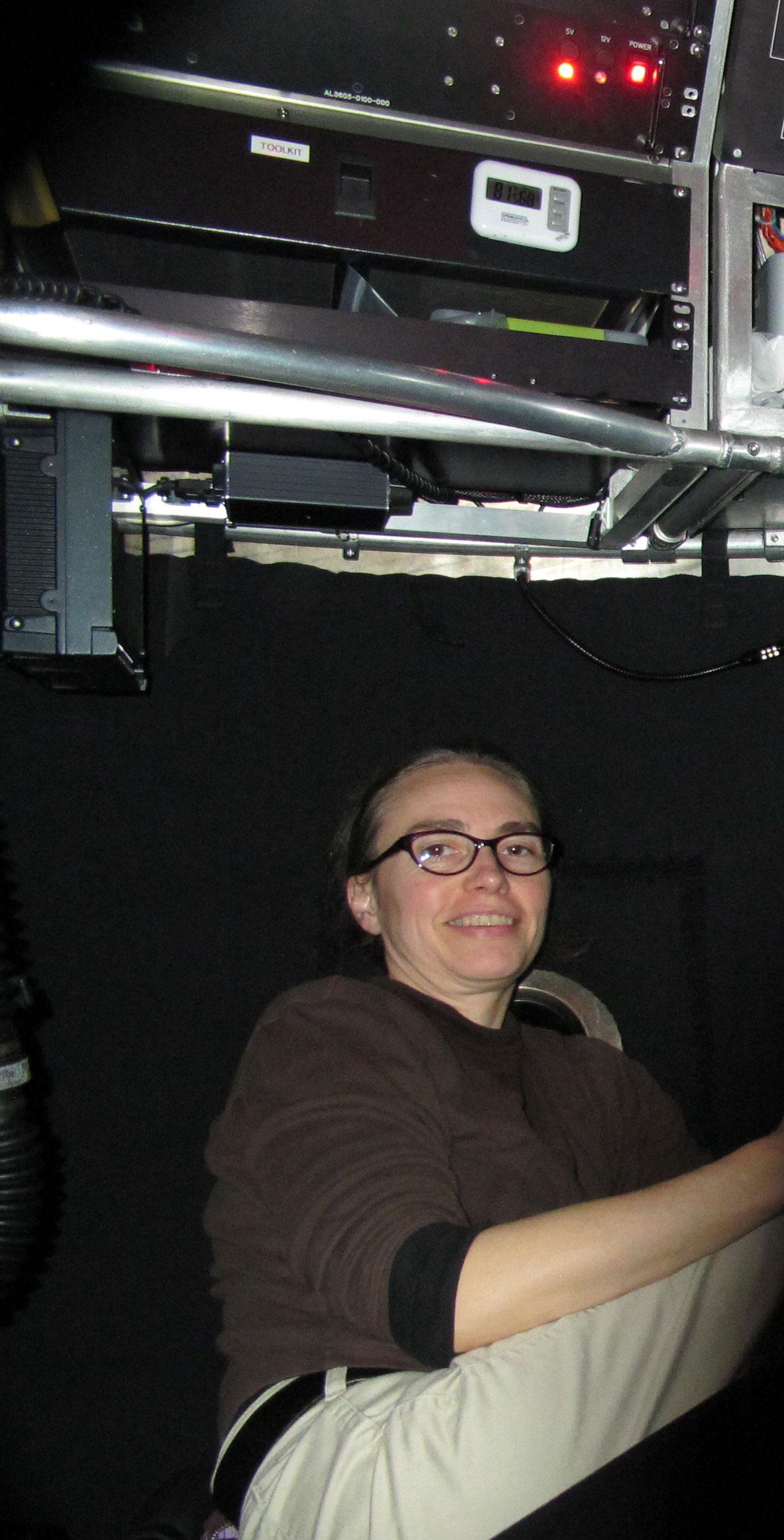The BP/Macondo oil well blowout in April 2010 ranks as one of the largest marine oil spills in history (only the Gulf War Oil Spill discharged more oil into an environment). The Macondo Blowout was a large scale environmental perturbation that allowed scientists to evaluate the capacity of the Gulf's natural microbes to consume hydrocarbons, to evaluate the controls on hydrocarbon degradation, to track the fate of hydrocarbons, and to elucidate the impacts of this immense hydrocarbon injection on the Gulf ecosystem.
Since May 2010, my group along with many collaborators and their students, post docs, and staff, have worked ceaselessly to do just this: to track the fate of hydrocarbons, document environmental impacts, and track ecosystem impacts and recovery from the oil and gas injection resulting from the Macondo Blowout. Between May 2010 and the present, my group has been involved in 15 cruises focused on quantifying Macondo impacts and contrasting Macondo-impacted sites. On one of those cruises, in December 2010, we dove with the HOV (Human Occupied Vehicle) Alvin to two sites near the Macondo wellhead.
On Friday March 28th, 9 members of my research group from the University of Georgia (UGA) and a UGA videographer (Todd Dickey), a writer (Antonia Juhasz), and 12 scientists from four other institutions (Florida State University, Georgia Institute of Techonology, the University of North Carolina at Chapel Hill, and Coastal Carolina University) arrived at the Port of Gulfport, Mississippi to load the R/V Atlantis with our gear in preparation for a 22-day research expedition.
On Saturay March 29th, the Science Party, Alvin Group, and Ship's crew hosted a media day event. Reporters from numerous outlets, from local Gulfport press to members of the national press attended, as did representatives of the agencies funding the cruise (the National Science Foundation Ocean Sciences program and the Gulf of Mexico Research Initiative) and some of our local colleagues from the University of Southern Mississippi (see Media_Day photo). It was a busy but fun afternoon and everyone enjoyed getting to know the freshly overhauled Alvin.
On Sunday March 30th, we sailed from Gulfport to return to the Macondo area . It was fairly a fast run (~16 hrs) out to the Macondo area. We arrived on site at 11PM and immediately got to work. We deployed a floating sediment trap at one of our long term monitoring sites (OC-26, 2 nm S of the wellhead), collected a multiple core at a location 1 nm from the wellhead, and did a CTD cast at OC26. It was a busy night!
Then, we moved North to get ready for our first dive on Monday morning March 31st. This was a big event -- not only the first dive of our cruise but the first official dive of the recently overhauled Alvin. What a priviledge to be the first group to do science with this amazing new vehice. We dove at MC118, a natural hydrocarbon seep to the NW of the Macondo wellhead. We saw "Sleeping Dragon", a massive sedimented gas hydrate mound, exposed hydrate hosting gas vents and white microbial mats, and "ice worms", amazing creatures that generate burrows into, and live atop of, gas hydrate (see Image Gallery, MC118 photos).
On April 1st, we moved to a site 2 nm due south of the Macondo wellhead. We visited this site in Dec. 2010 and at that time, the seafloor was barren -- during a 7 hour dive, we saw one crab but no other macrofauna were noted. During our dive yesterday, we were relieved to see a diverse array of sea life on the bottom, including brittle stars, sea cucumbers, crabs, skates, eels, and various fishes, shrimps and invertebrate infauna. The mysterious caramel brown layer that we discovered in 2010 remains; it is about the same thickness as it was in 2010; and it is widespread (we drove arond for over 2.5 km and saw the feature everywhere). The sharp contrast between this layer and the underlying gray, normal marine sediments also persists. We have a lot of work to do back in the lab to discover what this layer consists of and how it has changed over time (see Image Gallery, OC26 photos).
Today, we are diving at a site slightly to the East of the wellhead (MC253, the next block over), a site that is both a natural seep and a Macondo-impacted area. I'll report results from this dive on the next blog.
Until then, enjoy the photos -- especially those showing the spatious interior of the "new" Alvin and the Vampire Squid!!












